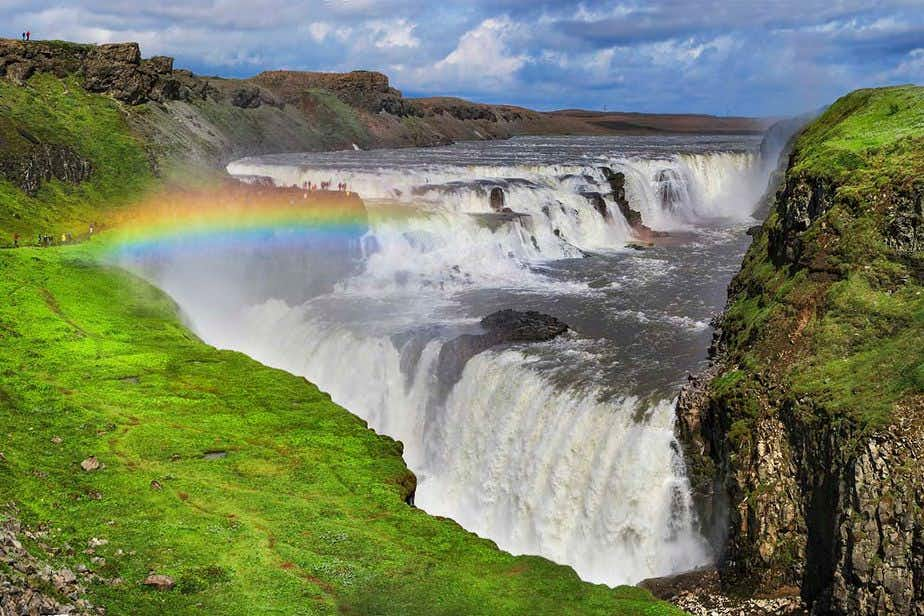Login
No account yet?
Create Account
Gullfoss
Popular Waterfall with a Lot of Fog
0 travellers have this on their Bucket List
0 been here
Gullfoss waterfall is one of the most popular waterfalls in Iceland. A large amount of water falls into a gorge of 32 meters deep, but it is mainly the amount of water that is impressive. In addition, this waterfall is easy to reach. The Gullfoss is located on the Golden Circle on the west of the island. Here are the top tips and sights of the waterfall.
The name means Golden Waterfall, which refers to the rainbow that is often seen in the fog. It is almost certain you will get wet from the spray as it is blown up by the wind. This makes the experience extra special.
The waterfall is located in the Hvitá river, which means white river. The river is mainly fed by glaciers, but also by rainwater. The water falls in two places. Which is clearly visible from the various vantage points. Just like the basalt, which is harder, and therefore does not erode as quickly as the other stone layers. You can see this clearly around the waterfall. The entire gorge is no less than 2.5 kilometres long and 70 meters deep.
Check My Video
Want more of my travel videos? Subscribe to my YouTube channel.
Visit Gullfoss
From Reykjavik, you can visit Gullfoss and other popular attractions in a day. This is one of the reasons why it can get very busy here. But luckily there are also plenty of moments to view this natural wonder in peace. You have many opportunities not to run into other tourists if you plan your visit wisely.
The Trail
There is a hiking trail along the rim of the canyon. Most people walk up to the viewpoint to take pictures. But you can walk further along the edge so you can see more of the falls. I have noticed that it can be slippery and cold here, especially in winter. So pay attention.
How to Avoid Crowds
Around ten o'clock in the morning, the first buses with tourists will arrive. They do most of the highlights of the Golden Circle in a day trip, usually by bus or minivan. It is, therefore, best to arrive before 10 am. This is especially recommended during the high season and other holiday periods. Then you can still hear raging water clearly instead of talking around you. And people taking a selfie.
Another option is the long summer days. During the midsummer night, it is light 24 hours a day. The long days start in May and continue until September. This means you can also go to Gullfoss in the late evening. Or even at night when the light is extra soft. In any case, this produces better photos than in bright sunlight. Or if it's cloudy. Your photos (and videos) will be extra atmospheric, which is extra special. I found it extremely beautiful and remarkably peaceful.
The Statue of Sigríður Tómasdóttir
When you walk around Gullfoss, you will see a stone with the name Sigríður Tómasdóttir on it. She is seen as Iceland's first conservationist, who helped protect Gullfoss. In 1907 a contract was signed to build a hydroelectric power station at Gullfoss. As a result, the waterfall would almost dry up. Sigríður's father also owned a piece of land and signed the agreement.
Sigríður was so enraged by the plans that she travelled to Reykjavik several times to challenge them. According to stories, she even walked 120 kilometres (one way) barefoot. Her mission received a lot of attention and positive reactions. She got help from Sveinn Björnsson, who later became Iceland's first president. In the end, construction did not go ahead, after which it was given official protected status in 1979.
0 travellers have this on their Bucket List
0 been here


